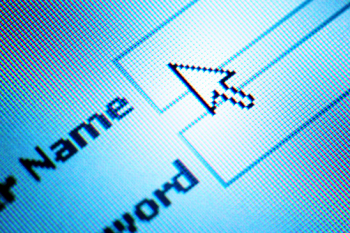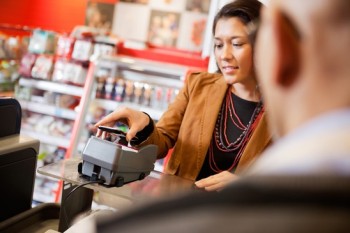How To Create A Strong Password – 4 Tips That Will Make Your Password Unbreakable
 Do you have a strong password?
Do you have a strong password?
Recently, you may have heard of the popular social networking site LinkedIn getting hacked. I know when the news first hit I immediately changed my password like so many others did. The real question is however are we really safe online and are we doing enough to protect ourselves. The truth is we are only one hack away from someone stealing are vital info online.
In fact in a recent article featured on IT World they claimed that a 6 digit alphanumerical password could be hacked anywhere from 4 weeks to less than a second, depending on the type of equipment the hacker is using. Now I don’t want to scare anybody but the answer should be obvious, we need to do more to protect are passwords and make them more secure.
So in this article I’m going to show you how to create a strong password and on top of that give you a simple solution as to how to manage those passwords.
4 Tips For Creating Passwords
It Must Be A 10 Digit Password. First off, in order to create a strong password it should be at least 10 full digits long. With 10 digits it means more possible combinations and options. Add on top of that using upper and lower case letters randomly can also help as well.
However I suggest doing this randomly because with most people, and this includes me, will typically capitalize the first letter of your password. By capitalizing an odd letter within your password you stand a much better chance not be hacked. Finally, stay away from things like using your name in the password.
Use A Symbol. Secondly, if you want to really full proof your password add a symbol to it. This could be a #, $, %, @, or any other symbol you wish to use. Just by doing this you will increase the security by 10 fold.
In fact, according to IT World with a symbol in your password it would take a hacker over 54 million centuries doing 1000 guesses at a time. In fact this has prompted to do this with all of my passwords immediately.
Make Every Password Different. The third tip I can give is that you should strive to make every password different. For example, your Facebook password should be different from your Twitter password, and your Twitter password should be different from your online banking password.
The reason for this is simple. The typical username for an account is typically your email address. In fact when LinkedIn got hit earlier last week it made me realize that I had the same username and password for several different accounts leaving me highly vulnerable not to only get hacked on LinkedIn but Facebook, Twitter, and many other sites as well.
Change Your Password. Finally, the last tip to consider is change your password on a regular basis. I suggest changing it anywhere from every 3 to 6 months. Doing will make it even harder for hackers to pick up on.
A Few Strong Password Examples
So now that we know what to do in order to create a secure password let’s consider a few ideas. To do this I’ll cover a few bad examples and a few good ones and you can use these ideas to model them after your passwords.
Bad Password Ideas
- Joe10
- Jane22
- Lucy234OCT
- ctbplX56#V
- r2d2$CP3p0
- pj10%ArE51
You Can Still Get Hacked
Now even though you have a full proof secure password I should mention that you can still get your password hacked, and it doesn’t take someone with a super computer either.
For example, you are checking your email one day and you get an email from your bank claiming your account got hacked and that you need to login immediately to secure your account.
The problem with this is email is that it’s a phishing scam and without knowing it you could send this scammer your log in information to your bank account. So know that your password you can still be hacked, but like a I always say a good offence is a good defense.
So now with so many passwords you might be wondering how am I going to possibly manage them all?
How To Manage Your Password
To do this you could just simply right them down but then this means you will be lugging around a notebook or a piece of paper in order to keep track of everything. On top of that add the fact that at some point you will misplace the paper or lose it means you won’t be able access any of your accounts.
Another option is to just remember them but if you have more than 3 passwords to remember it’s going to be tough to keep track of them.
A third option is to allow your internet browser to store them. Today’s browsers such as Google Chrome and Microsoft Internet Explorer all have this option, but they don’t allow you any way to manage them effectively. In fact, I use to do this and everything worked great right up until the point my browser history got erased. So what other options are their?
Enter Roboform. This handy software program is a viable solution that can not only store all of your password info but they can sync it to all of your other computers and mobile devices such as your iphone. On top of that with a click of a button it can even log in to your account for you.
To get started download the free version of Roboform and you save up to 3 passwords and if you want the full version it’s only $10 a year. To learn more check out Roboform Here.
Chris H.
This article was recently featured on The Carnival of Personal Finance by Nerd Wallet.
Sources
http://www.itworld.com/security/280486/how-long-would-it-take-crack-my-password



Hi,
Just thought that I would add to your article here. It was of course on the spot, but many people use simple passwords because it is easier to remember. You have to offer a system that is easy to remember but secure and so not likely to let them break into every account with one password.
The answer? Choose an algorithm. For example-
the base password is something that you will remember- eg. Stumb13f0rward
then you add something relevant to each account each time in a secret place, so that it is not obvious to the person if they see the password. for stumbleforward.com, you might add – st (first two letters).
lastly decided where in the base password the letters will be put. eg. – S_tumb13_f0rward
the secure password that you get for this website would be – Sstumb13tf0rward
You get the idea. Very useful, makes secure passwords and makes passwords easy to remember.
Not my idea, I read it somewhere else, but still works like a charm.
Hi Sally. That is an interesting formula you have there. The only thing I would add is that I would put some sort of symbol in the password as well. This makes it very tough for hackers to break and can add an extra layer of security.
Thanks for the comment.